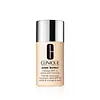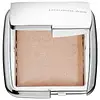Clinique Even Better Makeup Broad Spectrum SPF 15 Versus Hourglass Cosmetics Ambient Strobe Lighting Powder
What's inside
What's inside
 Key Ingredients
Key Ingredients

 Benefits
Benefits

No benefits
 Concerns
Concerns

 Ingredients Side-by-side
Ingredients Side-by-side

Ethylhexyl Methoxycinnamate 5.9%
UV AbsorberTitanium Dioxide 3.5%
Cosmetic ColorantZinc Oxide 2.8%
Cosmetic ColorantWater
Skin ConditioningMethyl Trimethicone
Skin ConditioningPhenyl Trimethicone
Skin ConditioningDimethicone
EmollientTriethylhexanoin
MaskingButylene Glycol
HumectantTrimethylsiloxysilicate
EmollientYeast Extract
Skin ConditioningPEG-10 Dimethicone
Skin ConditioningLauryl PEG-9 Polydimethylsiloxyethyl Dimethicone
Skin ConditioningAlumina
AbrasiveCitrus Grandis Peel Extract
AstringentBetula Alba Bark Extract
MaskingSaccharomyces Lysate Extract
HumectantAstrocaryum Murumuru Seed Butter
EmollientC12-15 Alkyl Benzoate
AntimicrobialGlycerin
HumectantSodium Myristoyl Sarcosinate
CleansingAcetyl Glucosamine
Skin ConditioningCaprylyl Methicone
Skin ConditioningMethicone
EmollientPolyglyceryl-6 Polyricinoleate
EmulsifyingDisteardimonium Hectorite
StabilisingDimethicone Crosspolymer-3
Skin ConditioningIsopropyl Titanium Triisostearate
EmollientLecithin
EmollientLaureth-7
EmulsifyingTocopheryl Acetate
AntioxidantMagnesium Ascorbyl Phosphate
AntioxidantDimethicone/PEG-10/15 Crosspolymer
Dipropylene Glycol
HumectantSodium Chloride
MaskingCaprylyl Glycol
EmollientTetrahexyldecyl Ascorbate
AntioxidantDisodium EDTA
Phenoxyethanol
PreservativePolyaminopropyl Biguanide
PreservativeCI 77891
Cosmetic ColorantCI 77491
Cosmetic ColorantCI 77492
Cosmetic ColorantCI 77499
Cosmetic ColorantMica
Cosmetic ColorantCI 77163
Cosmetic ColorantEthylhexyl Methoxycinnamate 5.9%, Titanium Dioxide 3.5%, Zinc Oxide 2.8%, Water, Methyl Trimethicone, Phenyl Trimethicone, Dimethicone, Triethylhexanoin, Butylene Glycol, Trimethylsiloxysilicate, Yeast Extract, PEG-10 Dimethicone, Lauryl PEG-9 Polydimethylsiloxyethyl Dimethicone, Alumina, Citrus Grandis Peel Extract, Betula Alba Bark Extract, Saccharomyces Lysate Extract, Astrocaryum Murumuru Seed Butter, C12-15 Alkyl Benzoate, Glycerin, Sodium Myristoyl Sarcosinate, Acetyl Glucosamine, Caprylyl Methicone, Methicone, Polyglyceryl-6 Polyricinoleate, Disteardimonium Hectorite, Dimethicone Crosspolymer-3, Isopropyl Titanium Triisostearate, Lecithin, Laureth-7, Tocopheryl Acetate, Magnesium Ascorbyl Phosphate, Dimethicone/PEG-10/15 Crosspolymer, Dipropylene Glycol, Sodium Chloride, Caprylyl Glycol, Tetrahexyldecyl Ascorbate, Disodium EDTA, Phenoxyethanol, Polyaminopropyl Biguanide, CI 77891, CI 77491, CI 77492, CI 77499, Mica, CI 77163
Mica
Cosmetic ColorantSynthetic Fluorphlogopite
Boron Nitride
AbsorbentHdi/Trimethylol Hexyllactone Crosspolymer
Polymethyl Methacrylate
Octyldodecanol
EmollientCalcium Sodium Borosilicate
Silica
AbrasiveDimethicone
EmollientMagnesium Aluminum Silicate
AbsorbentAlumina
AbrasiveBenzoic Acid
MaskingC13-14 Isoparaffin
EmollientDehydroacetic Acid
PreservativeDiamond Powder
AbrasiveEthylhexylglycerin
Skin ConditioningLaureth-7
EmulsifyingPhenoxyethanol
PreservativePolyacrylamide
Polymethylsilsesquioxane
Potassium Sorbate
PreservativeSodium Dehydroacetate
PreservativeSorbic Acid
PreservativeSorbitan Sesquioleate
EmulsifyingTin Oxide
AbrasiveTrimethylsiloxysilicate
EmollientCI 77163
Cosmetic ColorantIron Oxides
CI 77891
Cosmetic ColorantMica, Synthetic Fluorphlogopite, Boron Nitride, Hdi/Trimethylol Hexyllactone Crosspolymer, Polymethyl Methacrylate, Octyldodecanol, Calcium Sodium Borosilicate, Silica, Dimethicone, Magnesium Aluminum Silicate, Alumina, Benzoic Acid, C13-14 Isoparaffin, Dehydroacetic Acid, Diamond Powder, Ethylhexylglycerin, Laureth-7, Phenoxyethanol, Polyacrylamide, Polymethylsilsesquioxane, Potassium Sorbate, Sodium Dehydroacetate, Sorbic Acid, Sorbitan Sesquioleate, Tin Oxide, Trimethylsiloxysilicate, CI 77163, Iron Oxides, CI 77891
Ingredients Explained
These ingredients are found in both products.
Ingredients higher up in an ingredient list are typically present in a larger amount.
Alumina is another name for the compound aluminum oxide. It is used as a thickener, absorbent, and abrasive.
As an absorbent, alumina can give a mattifying effect. It is used in mineral sunscreens to help coat nano-sized filters, such as titanium dioxide. By increasing the size of the UV filters, these ingredients stay on the skin for a longer time. By coating small sized ingredients, alumina helps thicken a product.
Alumina may be used as an abrasive, or exfoliant.
Alumina is naturally occurring in the mineral corundum. Certain varieties of corundum create rubies and sapphires. Corundum is also the crystalline form of alumina.
Learn more about AluminaThis synthetic powder is used to add a pearly/white color in cosmetics.
Ci 77891 is a white pigment from Titanium dioxide. It is naturally found in minerals such as rutile and ilmenite.
It's main function is to add a white color to cosmetics. It can also be mixed with other colors to create different shades.
Ci 77891 is commonly found in sunscreens due to its ability to block UV rays.
Learn more about CI 77891Dimethicone is a type of synthetic silicone created from natural materials such as quartz.
What it does:
Dimethicone comes in different viscosities:
Depending on the viscosity, dimethicone has different properties.
Ingredients lists don't always show which type is used, so we recommend reaching out to the brand if you have questions about the viscosity.
This ingredient is unlikely to cause irritation because it does not get absorbed into skin. However, people with silicone allergies should be careful about using this ingredient.
Note: Dimethicone may contribute to pilling. This is because it is not oil or water soluble, so pilling may occur when layered with products. When mixed with heavy oils in a formula, the outcome is also quite greasy.
Learn more about DimethiconeLaureth-7 is created by the ethoxylation of lauryl alcohol using ethylene oxide. Lauryl alcohol is a fatty alcohol with hydrating properties.
This ingredient is an emulsifier and cleansing ingredient. As an emulsifier, it is used to prevent ingredients from separating. It also helps cleanse the skin by gathering dirt, oil, and pollutants to be rinsed away.
Mica is a naturally occurring mineral used to add shimmer and color in cosmetics. It can also help improve the texture of a product or give it an opaque, white/silver color.
Serecite is the name for very fine but ragged grains of mica.
This ingredient is often coated with metal oxides like titanium dioxide. Trace amounts of heavy metals may be found in mica, but these metals are not harmful in our personal products.
Mica has been used since prehistoric times throughout the world. Ancient Egyptian, Indian, Greek, Roman, Aztec, and Chinese civilizations have used mica.
Learn more about MicaPhenoxyethanol is a preservative that has germicide, antimicrobial, and aromatic properties. Studies show that phenoxyethanol can prevent microbial growth. By itself, it has a scent that is similar to that of a rose.
It's often used in formulations along with Caprylyl Glycol to preserve the shelf life of products.
This silicone is an emollient. Emollients create a thin film on the skin to prevent moisture from escaping.
It is not soluble in water and helps increase water-resistance in products.
According to a manufacturer, it can blend seamlessly with silicone oils, such as Cyclopentasiloxane.
Learn more about Trimethylsiloxysilicate